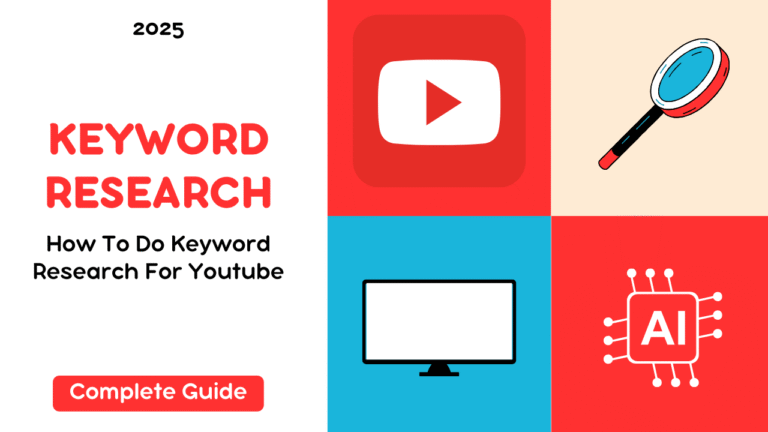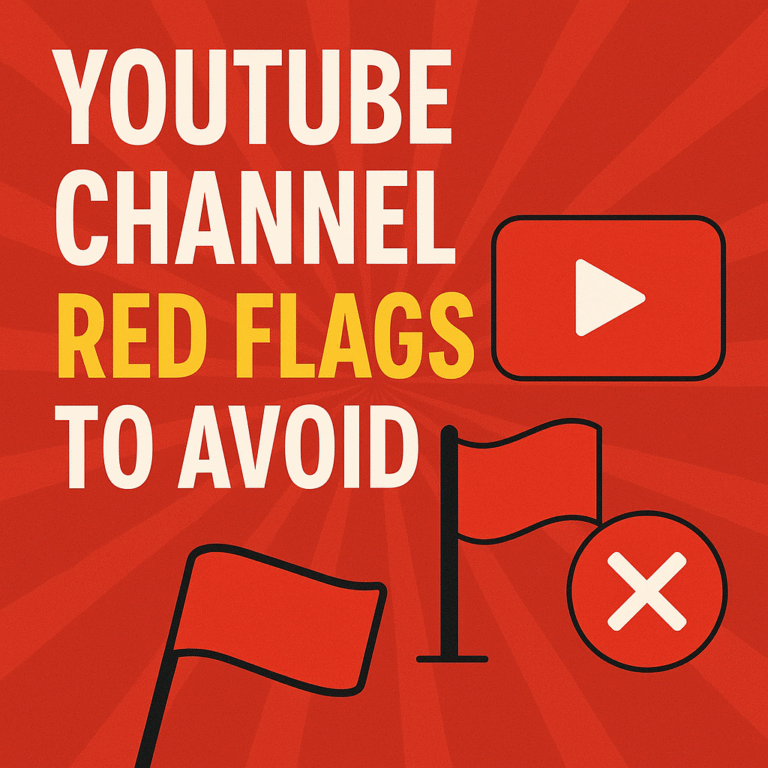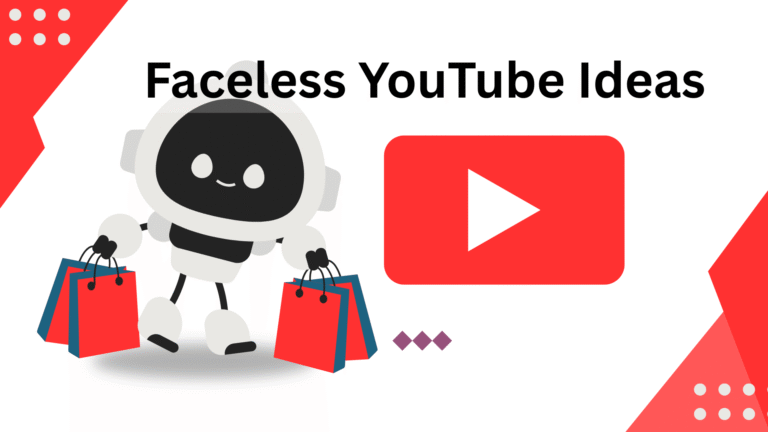When you purchase through links on our site, we may earn an affiliate commission.

The Power of Mimicry in the Faceless YouTube World
Why “Being a Gecko” Works
You’ve heard the phrase “be a Gecko”—but what does it mean in the YouTube game? Think of a Gekko blending into its environment, adapting effortlessly. That’s your YouTube strategy in a nutshell. You don’t need to reinvent the wheel; you just need to blend into a successful ecosystem, so well that viewers can’t tell the difference. The idea isn’t theft—it’s transformation. You camouflage your content to be 98% similar to your top-performing competitors: same kind of thumbnails, titles that mirror theirs in tone and structure, and similar video pacing, music, and editing.
This is especially powerful in faceless niches. No one’s watching for a personality—they’re there for the content: celebrity gossip, true crime, dark documentaries, listicles, and more. These viewers binge-watch whatever resembles what they already enjoy. If your video looks and sounds like their favorite channel, they’ll likely click—and stay. You blend in, get the clicks, and ride that wave of familiarity straight to monetization.
But mimicry isn’t mindless copying—it’s strategic emulation. That extra 2% you change gives your brand a chance to develop while remaining indistinguishable at a glance. A better title, cleaner edit, juicier detail—that’s your wedge in. Over time, you can grow from shadow to spotlight.
Psychological Triggers Behind Similarity-Based Success
This tactic works because of simple psychology: people like what they know. Familiarity breeds trust. When your thumbnails and titles feel like something they’ve already clicked and enjoyed, their brain lights up with that dopamine-fueled “yes, more of this!” reaction.
Humans are also incredibly visual. A thumbnail with an emotional face, bold text, and a topic they care about triggers instant curiosity. If that thumbnail and title combo looks like something from their favorite YouTuber, they assume it’s just as trustworthy and interesting. You don’t need to be famous—just recognizable.
This is why being a Gekko is so powerful. You’re not trying to stand out right away; you’re trying to slip in under the radar, build trust, and eventually emerge as a new player they love without ever knowing how they found you.
Step 1: Identify and Analyze the Right Competitors
Avoiding Major Corporate Channels
Let’s clear this up: don’t try to mimic BuzzFeed, Netflix, or any massive media machine. These behemoths have in-house production teams, exclusive access, brand power, and legal teams protecting their content. Competing with them is like trying to arm wrestle The Rock—you won’t win.
Instead, focus your sights on small to medium-sized YouTube channels in your niche. These are often run by solo creators or small teams using the same resources available to you: stock footage, AI voices, simple editing software, and public data. They’re automated, lean, and built to scale—just like the channel you’re building.
These smaller creators are your real targets. They’re successful enough to be making money, but not so big that they’re impossible to learn from or mimic. They’ve already done the hard work of testing what works in the niche. All you need to do is analyze and replicate—with slight improvements.
Spotting Successful Independent Creators
Here’s how to spot the goldmine channels:
- Subscriber Count: Look for channels with 10k–500k subs. These channels are typically optimized but still growing.
- Video Consistency: Do they upload weekly or even daily? This often means automation.
- Faceless Format: Narration over stock clips, animations, or image slideshows.
- High Engagement: Videos with high like-to-view ratios and strong comment sections.
- Content Similarity: Channels that mirror what you want to create are best to copy.
Make a list of 5–10 such channels. These are your blueprints.
Using Sorting Tools to Find Top-Performing Videos
Once you’ve shortlisted your competitors, it’s time to dig deeper. Head to each channel and use YouTube’s built-in filter to sort videos by “Most Popular.” This will instantly reveal what content brings the highest ROI for that creator.
Next, look at the recent uploads. If a video from two weeks ago has triple the views of their average, that’s a breakout hit. Ask yourself:
- What’s the title structure?
- How’s the thumbnail design?
- What topic or celebrity is featured?
- Are there any emotional triggers in the hook?
Take notes. These are the content veins you’ll mine for your channel.
Step 2: Study and Emulate Popular Content
Breaking Down Viral Videos
Watch the videos that performed best. You’re not just watching for entertainment—you’re dissecting. Ask these questions:
- How long is the video?
- What’s the pacing like?
- What music or sound effects are used?
- What’s the tone—sarcastic, dramatic, neutral?
- Are there cutaway memes or dramatic sound stingers?
Mimic these elements in your own videos. Use tools like InVideo, Pictory, or CapCut to replicate transitions and formats. The more you imitate the pacing and style, the more your video will feel like it belongs in that niche’s top tier.
Recognizing Trends and Patterns
Trends don’t always come from viral explosions. They often start quietly: a specific style of thumbnail, a recurring topic, or a subtle editing trend. If you see multiple videos from different channels with similar themes or structure, that’s a niche trend forming.
You want to be an early replicator. Don’t wait until it’s played out. When something feels “hot,” test it fast.
The Role of High Engagement Signals
Finally, pay attention to viewer behavior:
- Comments: What are people asking for? What do they love or hate?
- Likes vs. Views: A video with 200K views and 15K likes is gold.
- Retention Clues: If the video ramps up intensity every 15 seconds, that’s a pattern to copy.
These are the signals that show what people can’t resist. And if it worked for them, it can work for you—if you tweak and adapt it smartly.
Step 3: Title Reimagination Techniques
Keeping the Core Message, Tweaking the Wording
Here’s where your Gekko suit really shines. Titles are the doorway to clicks. You don’t want to steal them word for word, but you absolutely should reimagine them—keeping the essence but adding your own twist. The goal is to make your title sound fresh, yet immediately recognizable to fans of that content style.
Here’s the play: break down the competitor’s viral title and analyze the parts:
- Subject (celebrity, event, figure)
- Action (what they did or what happened)
- Emotion (shock, anger, reveal)
Now, rewrite it keeping those three parts in play but using different phrasing.
Examples:
- “Camille Vasquez Exposes Amber Heard for Money Laundering”
becomes
“Ben Chu Reveals Amber Heard’s Financial Scandal” - “Kanye West Speaks on Losing Donda Academy”
becomes
“Kanye West Reacts to Donda Academy Shutdown”
Same intent, same emotional hook, but different enough to be unique—and searchable.
Title Branching with Celebrities, Topics, and Events
Once you’ve got one successful title formula, branch it out by swapping the names or topics. This is one of the easiest ways to produce consistent viral titles without needing to reinvent everything each time.
For example:
- “Kim Kardashian Reacts to Kanye West’s Actions”
becomes:- “Khloe Kardashian Responds to Kanye West’s Behavior”
- “Kendall Jenner Speaks Out on Kanye West’s Scandal”
- “Kylie Jenner Breaks Silence on Kanye’s Latest Rant”
Same template. Different subject. And guess what? People click on all of them.
Real Examples of Successful Rewritten Titles
Let’s take some actual viral formats and rework them:
- Original: “Selena Gomez Breaks Down Crying Over Justin Bieber’s Wedding”
➤ Rewritten: “Selena Gomez Gets Emotional After Justin Bieber’s Marriage News” - Original: “Joe Rogan Confronts Elon Musk Over AI Dangers”
➤ Rewritten: “Elon Musk and Joe Rogan Clash Over AI Threats” - Original: “Taylor Swift Fires Back at Kanye’s New Diss Track”
➤ Rewritten: “Taylor Swift Responds to Kanye West’s Latest Insult”
This process lets you surf the trending wave without being swallowed by it.
Step 4: Creating Click-Worthy Thumbnails
How to Analyze Competitor Thumbnails
YouTube is visual warfare—and thumbnails are your weapons. Take a hard look at your competitors’ top-performing thumbnails. Screenshot them. Line them up side by side. Ask yourself:
- What colors dominate?
- Are there emotional facial expressions?
- Is there text, and how is it styled?
- What’s the layout—left-right split, face on one side, bold text on the other?
Patterns will emerge fast. Most successful thumbnails use high contrast, sharp outlines, close-up faces, and bold, readable fonts. They scream emotion—shock, anger, sadness, surprise.
Designing High-Converting Thumbnails
Once you’ve spotted the patterns, start building your own. Use free tools like Canva, Thumbnail Blaster, or Photoshop if you’re advanced.
Tips:
- Use cutout faces of celebrities or figures relevant to the story.
- Add 1–3 words max in big, bold font.
- Use red circles, arrows, or shock emojis to direct attention.
- Keep your color scheme consistent with your niche (celebrity gossip loves pinks, reds, and yellows).
Make it so close to competitor styles that a viewer might double-take. But change just enough to avoid direct duplication.
Emotional Triggers That Hook Viewers
This is the secret sauce. Every viral thumbnail sparks emotion. Here’s how you do it:
- Shock: Big eyes, hands on mouth, breaking news banners.
- Curiosity: Blurred out elements, question marks, half-revealed faces.
- Anger: Faces mid-argument, red filters, fiery text.
- Sadness: Tearful eyes, black-and-white filters, headlines like “Goodbye…”
You want your thumbnail to say “You need to know this NOW.” That’s how you get clicks without clickbait—because the video delivers.
Step 5: Replicating Video Structures and Edits
Video Style: Music, Pace, and Cuts
You’ve nailed the title and thumbnail. Now the video has to keep them hooked. Here’s where you copy your competitors’ pacing and structure. Don’t guess—watch their top 5 videos and map out:
- How long is the intro?
- Are there music beds or background scores?
- What kind of visuals—stock video, images, AI animation?
- How often do they cut or change the scene?
Faceless channels often use upbeat royalty-free music, quick transitions every 5–10 seconds, and dramatic voiceover narrations. You can easily replicate this with tools like:
- Pictory.ai – converts scripts to video
- InVideo – templates for faceless videos
- ElevenLabs – AI voiceovers that sound human
Match the editing rhythm. Viewers are subconsciously addicted to pacing—they’ll notice if yours feels off.
Voiceovers and Stock Footage Selection
Voice matters. Use a high-quality AI voice with emotion and variation. If you’re comfortable, record your own with a decent mic and voice acting—it adds authenticity.
For footage, rely on:
- Pexels / Pixabay / Storyblocks for stock video
- Giphy for short reaction clips
- Envato Elements for premium visuals (if budget allows)
The footage doesn’t need to match the story 100%. It just needs to feel cohesive.
Keeping the Viewer Engaged Facelessly
Your viewer should never feel bored. Use pattern interruption: quick text overlays, zooms, meme cuts, sound effects. Add cliffhangers before the ad breaks (or mid-rolls). Say things like:
- “But it gets crazier…”
- “You won’t believe what happened next…”
- “Here’s the twist…”
Keep tension. Keep them watching. Every second they stay, your channel gets closer to viral growth.
Step 6: Mixing and Matching Concepts for Fresh Ideas
Concept Blending for Original Copycat Content
Here’s where you really start adding your own creative flair while still riding the coattails of proven content. You don’t have to wait for a new trend—you can create hybrid content by blending two or more popular themes. Look at your niche’s trending topics. Now ask, “What happens if I mash these together?”
Example:
- One video is trending about Selena Gomez’s health.
- Another is about Hailey Bieber’s jealousy rumors.
Your blended concept?
“Hailey Bieber Reacts to Selena Gomez’s Health Revelation”
You’re taking two buzzworthy names and mashing their narratives into one cohesive, clickable story. People who are interested in either will click—and you just doubled your potential audience.
Taking Two Trends and Merging Them
Another example. Let’s say two trending videos are:
- “Elon Musk Talks AI Dangers”
- “Joe Rogan Predicts the Future of Tech”
You create:
“Joe Rogan and Elon Musk Discuss the Scary Future of AI”
Boom. One video, two viral magnets. Use tools like Google Trends and YouTube’s “Trending” tab to find hot names and events. Then, combine them intelligently.
This technique is how top channels maintain upload frequency and originality—without doing anything new.
Staying Ahead by Forecasting Content Fusions
Want to take it even further? Start spotting emerging trends and imagine how they could collide.
Example: You notice chatter building around AI and celebrity deepfakes. You might create:
“Tom Cruise Deepfake Scandal Sparks AI Ethics Debate”
This might not even be real news yet—but it feels real. And people love speculative drama. You stay ahead by being first to the fusion.
The golden rule? If it sounds like a headline people would click, it’s worth testing.
Step 7: Staying Ethical and Legal While Copying
Avoiding Defamation and Risky Claims
Now here’s where you draw the line. Mimicry is fine—defamation isn’t. YouTube has rules. So does the law. If you label someone as a criminal, abuser, or anything defamatory without evidence, you’re opening yourself to lawsuits and channel deletion.
Don’t ever write titles like:
- “Amber Heard Caught in Drug Ring”
- “Ellen DeGeneres Exposed as Racist”
Even if those get clicks, you’re gambling with your entire operation.
Instead, use suggestive language that’s exciting but legally safe:
- “Amber Heard Faces Allegations of Misconduct”
- “New Claims About Ellen Shock Fans”
You imply controversy without stating it as fact. It’s responsible—and keeps you in business.
Why Responsible Mimicry Pays Off Long-Term
The faceless YouTube game is a marathon. Channels that grow big and stay big do so because they play smart. If you cross lines for clicks, you might go viral once—but YouTube can demonetize or ban you instantly.
YouTube’s algorithm now favors “sustainable creators.” That means channels with consistent uploads, low strike history, and good viewer retention. Responsible mimicry ensures your channel builds a good reputation with the system—and that means long-term income.
Keeping Your Brand Safe from Shutdowns
To protect your channel:
- Don’t use copyrighted music or footage.
- Never falsely accuse or defame.
- Avoid using actual news anchors’ voices or faces.
- Always fact-check major claims—or phrase them as rumors.
A good rule: If it feels like a stretch, rephrase it. There’s always a way to sound exciting without being reckless.
Step 8: Leveraging Other Niches for Inspiration
Cross-Niche Adaptation Tactics
Think outside your bubble. If you’re in the celebrity niche, explore channels in:
- True crime
- Tech news
- Dark history
- Conspiracy theories
Each of these niches has title structures and storytelling techniques you can borrow. True crime, for instance, is a goldmine for suspense-building—use their tactics in your celebrity stories.
Example:
- True crime style: “The Last Call Before She Vanished”
- Your spin: “The Last Text Selena Sent Before Rehab”
You’re not copying the content—you’re stealing the format and injecting it with your niche’s flavor.
What to Extract from Non-Celebrity Channels
- Tech channels show how to explain complex info simply.
- History channels teach narrative flow and pacing.
- Motivational channels offer epic music, voiceovers, and storytelling arcs.
In every case, you’re taking their structure, delivery style, and formatting tricks—then remixing them into your own faceless content.
How to Make Their Success Yours
YouTube rewards iteration. When you adapt something new from another niche, you’re the first to bring it to your own space. This makes you the trendsetter.
Test, observe, and double down on what clicks. You’ll end up becoming one of the channels people start copying—and that’s when you know you’ve made it.
Step 9: Becoming the Trendsetter
Creating Copy-Worthy Content for Others to Mimic
Here’s a fun twist: once your copied content starts going viral, others will start copying you. That’s not failure—it’s domination. If you see thumbnails, titles, and scripts resembling yours, it means you’re doing something right.
Watch for this. It’s a signal that your content structure works. Lean into it. Make your next videos even more polished, and start building recognizable branding: color themes, title formulas, sound effects.
Why Getting Copied Is a Badge of Honor
When you get copied, it proves your ideas aren’t just good—they’re infectious. It’s also a power move. Now you control the tone of your niche. Viewers begin to associate your style with quality, and new creators emulate your format.
This gives you leverage to do more:
- Launch more channels in other niches.
- Get sponsorships or shoutouts.
- Create digital products or templates.
You’ve become an influencer—without ever showing your face.
Building Your Own Template Others Follow
Think about it: the most successful faceless channels follow a repeatable blueprint. Once you refine your title style, thumbnail theme, and editing format, you can scale.
Your “template” becomes a content engine. Hire freelancers or use AI tools to help you mass-produce while maintaining quality. This is where creators start hitting $10K/month passively.
You didn’t just copy your way to success—you copied smart, scaled fast, and now you lead the niche.
Step 10: Monetizing the Copied Content
Revenue Streams: AdSense, Sponsorships, and Affiliates
Once your content starts gaining traction, it’s time to cash in. There are several ways to monetize faceless YouTube videos, even without showing your face or revealing your identity:
- YouTube AdSense – The bread and butter. With 1,000 subscribers and 4,000 watch hours, you can apply for monetization. Faceless channels in trending niches can earn $2–$8 per 1,000 views.
- Sponsorships – Brands are hungry for eyeballs. If you hit consistent 10K+ views per video, you can reach out to affiliate networks or brands directly. Think VPNs, finance apps, wellness products, and more.
- Affiliate Links – Promote relevant products in your descriptions. For example, in a celebrity or lifestyle niche, recommend skincare, books, or fashion with affiliate links from Amazon or ShareASale.
- Digital Products & Merch – Once you’ve got an audience, consider launching faceless-brand merch, guides, or even Notion templates and cheat sheets.
The more views you drive, the more opportunities show up. And since the content is evergreen and repeatable, the revenue keeps stacking.
Scaling Without Showing Your Face
Here’s the beauty of this model: you can scale without ever appearing on camera. Use tools to automate the process:
- Scriptwriting – ChatGPT (hello!), Jasper, or Koala.
- Voiceovers – ElevenLabs or WellSaid Labs for lifelike AI voices.
- Video creation – InVideo, Pictory, or stock footage platforms.
- Thumbnails – Canva or Thumbnail Blaster.
Outsource what you can afford. If a video costs you $30 to make and earns $100 in its lifetime, you’re printing money. Scale that to 100 videos—and welcome to passive income paradise.
Reinvesting Profits to Grow Your Faceless Empire
Don’t sit on your early earnings. Reinvest them to:
- Upgrade tools – Get access to premium AI voices, editors, or footage.
- Hire help – Find freelancers on Fiverr or Upwork for scripts, editing, or thumbnails.
- Launch second channels – Once one niche works, branch into another. The formats stay the same; only the topics change.
This is how creators build empires of multiple automated channels that run 24/7. Faceless doesn’t mean low-effort—it means scalable.
Conclusion: From Shadow to Spotlight—Your Journey to Faceless YouTube Fame
Let’s face it: originality is overrated when you’re starting out. If you’re trying to succeed on YouTube with faceless content, mimicry isn’t cheating—it’s smart strategy. The Gekko method—blending into your niche by copying 98% of what works—lets you fast-track success without reinventing anything.
By carefully selecting the right competitors, analyzing their top videos, mimicking their structure, reimagining titles, and replicating thumbnails, you become a carbon copy of success—with just enough twist to make it yours. Add in ethical boundaries, trend-blending creativity, and cross-niche adaptation, and you’ve got a formula built for rapid growth.
You don’t need fame, a fancy camera, or even your own voice. What you need is consistency, insight, and the willingness to imitate before you innovate. And once your content starts getting copied, you’ll know you’ve crossed the line from imitator to innovator.
Now go be a Gekko. Camouflage, click, and cash in.
FAQs
Is copying other YouTube channels legal?
Yes, as long as you’re not plagiarizing word-for-word, stealing copyrighted footage, or making defamatory claims. Mimicking titles, formats, and themes is legal and common on YouTube.
Can I get monetized with faceless videos?
Absolutely. As long as your content follows YouTube’s rules and is original in terms of editing, narration, or visual presentation, faceless videos are fully eligible for monetization.
How do I make my content stand out while still copying?
By tweaking titles, adding your own storytelling angle, using fresh voiceovers, and combining multiple trends. Mimic structure, not substance.
What tools can I use to analyze competitors?
Use YouTube’s built-in “Sort by Popular” feature, Chrome extensions like vidIQ or TubeBuddy, and Google Trends to keep tabs on hot topics and channels.
How fast can I start earning from this method?
If you’re consistent and strategic, some channels see results within 30–60 days. With 2–3 videos per week and strong thumbnails, it’s realistic to reach monetization in 90 days or less.



